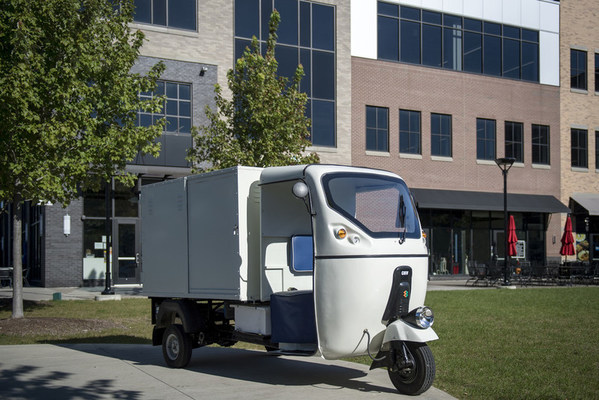Asia has long had a monopoly on the amazing three-wheeled vehicles known as tuk-tuks or rickshaws. Now BILITI Electric is trying to change that with the release of the GMW Taskman in the US.
The car just made its US debut at the Los Angeles Auto Show, where the team showed off the new electric three-wheeler and its new battery charging capabilities.
Designed for commercial use, such as last-mile delivery, the GMW Taskman has a spacious rear cargo area capable of supporting payloads of up to 1,500 pounds (680 kg).
This is probably enough for most urban tasks, but the electric three-wheeler has a clever solution to reduce charging time when the battery eventually runs out. In fact, the charging step has been completely removed. Or at least by car.
Instead, a swappable battery system called SmartSwapp allows business users to insert new batteries when the Taskman runs low. The concept is similar to the famous Gogoro replacement batteries. BILITI also offers an app that directs drivers to replacement stations, meaning the vehicle does not need to be returned to a garage or base of operations for replacement. The app also allows commercial operators to monitor vehicles while they are in use.
Battery replacement takes less than a minute, meaning commercial operators can quickly get Taskman back on the road. The depleted battery can then be recharged, and Taskman can continue driving on the newly charged battery.
Thanks to its 4.5 kW (6 hp) electric motor, the Taskman has a top speed of just 25 mph (40 km/h), so it’s not necessarily the fastest car on the road. But it may be one of the fastest electric tuk-tuks in the US (spoiler alert: there’s not much competition). It will also be tied to the top speed of my own Asian imported electric mini-truck.
Major retailers such as IKEA, Walmart and Amazon use GMW Taskman for commercial purposes in 15 countries in Europe and Asia.
In total, they have driven more than 20 million miles and delivered more than 12 million packages, according to BILITI Electric.
Taking advantage of all this roof space, the company is also exploring the possibility of using solar panels as a way to charge vehicles while they are in use.
”At AutoMobility we are also highlighting for the first time a very important green innovation – solar panels. Mounted on three sides of the car, solar panels provide enough power to fully charge the Taskman’s battery in just three hours. You can recharge 100% from sunlight, which increases range is another 110 miles.”
A three-hour charging time would be impressive, especially since no other solar-powered electric vehicle can meet this requirement. Most use solar panels as a way to gradually charge the battery, which increases range but is usually not a complete replacement for mains charging.
What do you think about GMW Taskman from BILITI Electric? Can you see them delivering in your city? Let us know in the comments below!
Micah Toll is a personal electric vehicle enthusiast, battery geek, and author of the #1 Amazon best-selling books DIY Lithium Batteries, DIY Solar Panels, The Complete Guide to the DIY Electric Bike, and The Electric Bike Manifesto.
Miki’s current daily rider e-bikes include the $999 Lectric XP 2.0, $1,095 Ride1Up Roadster V2, $1,199 Rad Power Bikes RadMission, and $3,299 Priority Current. But these days, this list is constantly changing.
Statement: The picture and text come from the Internet, compiled and published according to public information, reproduced for the purpose of disseminating information, if there is any infringement or violation, please contact us to delete. If you need to reprint or quote the materials of this article, please indicate the source.
Post time: Apr-09-2024

